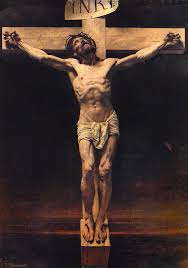Other Vridar posts discussing the gospels as parables:
- Making sense of Jesus in the Gospel of Mark
- Making more sense of Jesus . . .
- Art and Aramaic in the Gospel of Mark
- Jesus’ Journey Into Hell and Back — told symbolically in the Gospel of Mark?
- Was the Empty Tomb Story Originally Meant to be Understood Literally?
And Tim Widowfield’s post on the same theme in the Gospel of John:
 Continuing the series . . .
Continuing the series . . .
Nanine Charbonnel’s [NC] last pages of her chapter on the meaning of “fulfilment” in the gospels dovetail with John Dominic Crossan’s The Power of Parable and Thomas Brodie’s Beyond the Quest for the Historical Jesus (links are to Vridar posts discussing these works) – and with any other writing that has argued that the Gospels are parables.
We know that Jesus was famous for speaking in parables but NC (like “Jesus historicist” Crossan and “Jesus mythicist” Brodie) goes further and suggests that the gospel stories about Jesus and all that he did are written as parables.
In what follows I attempt to convey some rough sketch of NC’s thesis. We will see that she delves into deeper technical reasons for reading the gospels as “parables”.
That the character of Jesus himself is a parable is most clearly seen in the Gospel of John where we read, explicitly, that Jesus is “the word”, that his appearance in flesh is a visible form of “the word”. In this gospel it is accordingly easier to grasp that “biographical” episodes of Jesus, such as his encounter with the sisters Martha and Mary, are parables whose meaning is not hidden very far beneath their surfaces. The acts of Jesus are dramatizations of the word.
Explicit and hidden
There are places in the gospels where an implied narrator informs readers that a specific thing happened as a fulfilment of an “Old Testament” prophecy. Matthew 2 contains the most memorable instances:
14 So he got up, took the child and his mother during the night and left for Egypt, 15 where he stayed until the death of Herod. And so was fulfilled what the Lord had said through the prophet: “Out of Egypt I called my son.”
16 When Herod realized that he had been outwitted by the Magi, he was furious, and he gave orders to kill all the boys in Bethlehem and its vicinity who were two years old and under, in accordance with the time he had learned from the Magi. 17 Then what was said through the prophet Jeremiah was fulfilled:
18 “A voice is heard in Ramah,
weeping and great mourning,
Rachel weeping for her children
and refusing to be comforted,
because they are no more.”. . .
23 and he went and lived in a town called Nazareth. So was fulfilled what was said through the prophets, that he would be called a Nazarene.
NC writes that these explicit pointers are there to highlight for the reader the rule of the game. The fulfilment applies to the whole narrative. Parables in the mouth of Jesus ought not lead the reader to think that the gospel narrative itself is a parable. The beginning of Jesus’ public ministry as told in Luke 4 announces the fulfilment of a text that served as a major inspiration for the author of the gospel’s larger narrative:
16 He went to Nazareth, where he had been brought up, and on the Sabbath day he went into the synagogue, as was his custom. He stood up to read, 17 and the scroll of the prophet Isaiah was handed to him. Unrolling it, he found the place where it is written:
18 “The Spirit of the Lord is on me,
because he has anointed me
to proclaim good news to the poor.
He has sent me to proclaim freedom for the prisoners
and recovery of sight for the blind,
to set the oppressed free,
19 to proclaim the year of the Lord’s favor.”20 Then he rolled up the scroll, gave it back to the attendant and sat down. The eyes of everyone in the synagogue were fastened on him. 21 He began by saying to them, “Today this scripture is fulfilled in your hearing.”

The immediate narrative meaning is that Jesus is announcing that his presence before the Nazareth congregation is the fulfilment of Isaiah’s prophecy. The reader knows, however, that what is being fulfilled is the entire life and death of Jesus as fleshed out through the entire gospel.
If in Luke we read Jesus’ opening words declaring that he is fulfilling the scriptures, in the Gospel of John chapter 19 we read Jesus’ last words declaring that he has fulfilled them all.
28 Later, knowing that everything had now been finished, and so that Scripture would be fulfilled, Jesus said, “I am thirsty.” 29 A jar of wine vinegar was there, so they soaked a sponge in it, put the sponge on a stalk of the hyssop plant, and lifted it to Jesus’ lips. 30 When he had received the drink, Jesus said, “It is finished.”
The Greek words are different but the meaning is the same:
Luke 4:21 — πεπλήρωται / peplērōtai (is fulfilled)
John 19:30 — τετέλεσται / tetelestai (it is finished/accomplished)
The Gospels as fulfilment
To take a closer look at those two words: Continue reading “Gospel Parables and the “Birth” of the Messiah as a Personification of Israel”
